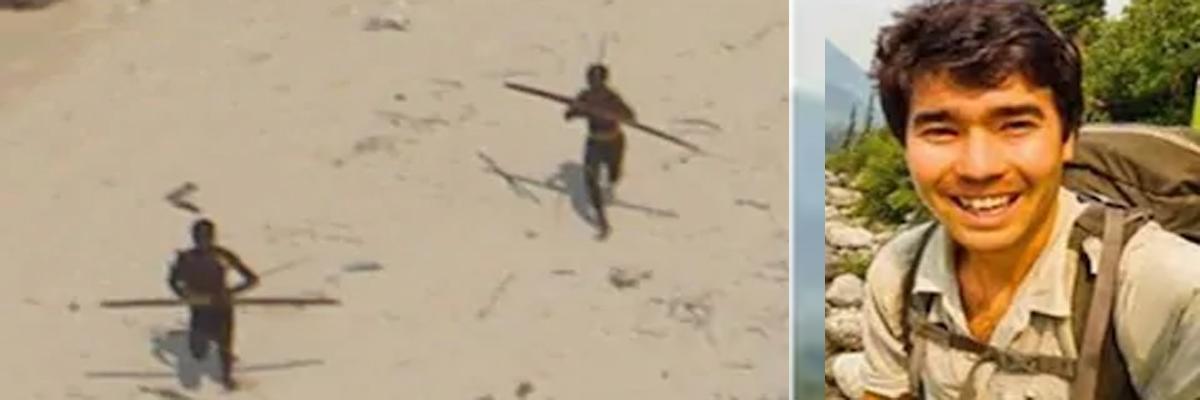Live
- World Heritage Day Today: Save! Stone railing of historic Golkonda Fort is crumbling
- Rajamahendravaram: Thrimurthulu verdict puts YSRCP in a spot
- Two students held for selling MDMA drugs
- Sri Venkateswara Swamy Temple celebrates Sri Rama Kalyanam
- Pulivendula: Sharmila to file papers on April 20
- Gold rates in Visakhapatnam slashes, check the rates on 18 April 2024
- IIIT Hyd launches eMSIT
- Gold rates in Vijayawada slashes, check the rates on 18 April 2024
- Gold rates in Hyderabad slashes, check the rates on 18 April 2024
- Konda Vishweshwar advocates for Ram Rajyam in Chevella
Just In

The death of American evangelist John Allen Chau in the North Sentinel Island of the Andamans has brought into focus the existence of tribes who are still in the Neolithic age in this remote Indian archipelago
The death of American evangelist John Allen Chau in the North Sentinel Island of the Andamans has brought into focus the existence of tribes who are still in the Neolithic age in this remote Indian archipelago.
It is estimated that the Sentinelese and other Andaman tribes have been cut off from other humans for around 55,000 years. It was the establishment of a penal colony in the Andaman and Nicobar Islands in the Bay of Bengal by the colonial British rulers in 1858, in the wake of the 1857 uprising, which suddenly exposed them to the vagaries of ‘modern’ forces. The result was an unmitigated disaster.
Without going into a detailed history of the past century-and-a-half, it is necessary to point out that the Great Andamanese Confederation of tribes in these 300-odd islands spread over 8,200 km - of whom only about 38 are inhabited - got effectively wiped out though violence, alcohol and lack of immunity to influenza, syphilis and other infectious diseases.
Three tribes, the Jarawas, Sentinelese and Shompens have, till recently, shied away from contact with the outside world. The Shompens are shy and retiring, and occasionally come out and receive supplies from the government but are otherwise self-sufficient. They are Mongoloid, unlike the other two who are Negrito.
The Jarawas have received the most attention since government established villages where refugees from East Bengal, Moplah rebels and others have been settled in areas contiguous to Jarawa reserves. For decades there was conflict, with poachers regularly killed by the Jarawas.
Since no effort was made to either bring them out or allow further ‘legal’ encroachment on their land, gradually the Jarawas gave up their hostile attitude.
The Sentinelese are lucky in that they stay on a separate island, 36 km west of South Andaman Island. Their numbers are in the range of 50 to 100 and, though small, they have successfully kept the outside world out.
In 1982, a serious but unplanned attempt was made to contact them physically. There was a silent face-off but one person, the then Superintendent of Police P.V. Sinari, moved closer to them. An arrow was shot to possibly warn him because it was aimed at the ground in front of him but, as he dived, it pierced his life-jacket.
By Shakti Sinha

© 2024 Hyderabad Media House Limited/The Hans India. All rights reserved. Powered by hocalwire.com







